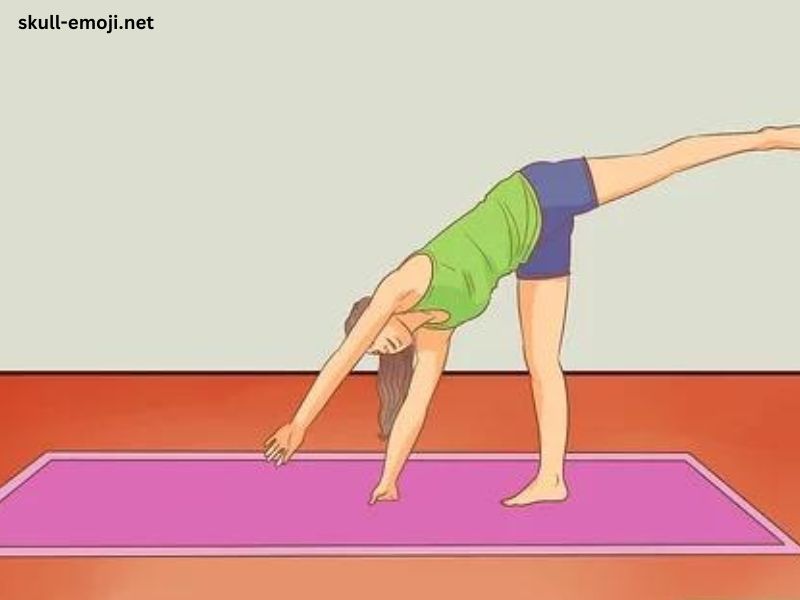The cartwheel is a fundamental gymnastics skill that embodies grace, balance, and athleticism. Whether you’re aiming to impress your friends, enhance your gymnastics repertoire, or just have fun, learning how to do a cartwheel can be an enjoyable challenge. This guide will take you through everything you need to know to master this exciting move, including tips, techniques, and common mistakes to avoid.
Understanding the Cartwheel
A cartwheel is a lateral movement that involves flipping your body sideways while maintaining balance and momentum. It’s characterized by the hands touching the ground first, followed by the legs and feet coming over the body. This move not only showcases flexibility and strength but also builds coordination and body awareness.
Benefits of Learning a Cartwheel
- Physical Fitness: Cartwheels engage multiple muscle groups, enhancing overall strength, flexibility, and endurance.
- Coordination and Balance: Performing a cartwheel requires good coordination, which can improve balance and stability in other physical activities.
- Confidence Boost: Mastering a new skill can greatly enhance self-esteem and confidence, encouraging you to take on more challenges.
- Fun Factor: Cartwheels are a playful and exhilarating skill to show off to friends and family.
Preparing to Learn a Cartwheel
Before attempting a cartwheel, it’s essential to prepare your body and mind. Here’s how to get ready:
Warm-Up Exercises
A proper warm-up is crucial to prevent injuries and improve performance. Focus on exercises that increase flexibility and strength:
- Dynamic Stretches: Include arm circles, leg swings, and torso twists to loosen up your muscles.
- Core Strengthening: Plank holds and sit-ups can help build the core muscles necessary for stability.
- Leg Stretching: Hamstring and quadricep stretches can enhance your flexibility.
Safety First
Ensure you have a safe environment to practice. An open space with a soft surface, such as grass or a mat, is ideal. It’s also advisable to have a spotter, especially when you’re just starting.
Step-by-Step Guide to Performing a Cartwheel
Now that you’re warmed up and ready, let’s break down the cartwheel into manageable steps.
Step 1: The Starting Position
- Stand Tall: Begin by standing upright with your feet shoulder-width apart.
- Choose Your Dominant Side: Decide whether you want to do the cartwheel on your right or left side. Most people prefer to lead with their dominant hand.
Step 2: Arm Placement
- Raise Your Arms: Lift your arms overhead, keeping them straight and strong.
- Prepare to Lean: Shift your weight slightly onto your leading leg (the leg closest to your dominant side).
Step 3: The Lunge
- Lunge Forward: Step forward with your dominant leg and bend your knee, creating a slight forward motion.
- Lower Your Hands: As you lunge, place your hands on the ground in front of you, shoulder-width apart.
Step 4: Kicking Off
- Kick Your Back Leg: As your hands touch the ground, kick your back leg (the non-dominant leg) upward, generating momentum.
- Engage Your Core: Tighten your abdominal muscles to maintain control throughout the movement.
Step 5: The Body Flip
- Flip Your Hips: As your legs come over your body, focus on keeping your body straight and aligned.
- Look at Your Hands: Keep your eyes on your hands to help maintain balance.
Step 6: Landing
- Finish Strong: As your legs come down, aim to land on your feet with your knees slightly bent.
- Stand Up Tall: Complete the movement by standing up straight, arms raised for balance.
Common Mistakes and How to Avoid Them
Even seasoned gymnasts can make mistakes when performing a cartwheel. Here are some common pitfalls and tips to overcome them:
- Poor Hand Placement: Make sure your hands are shoulder-width apart. This will provide better balance and stability.
- Inconsistent Kick: A weak or inconsistent kick can hinder your momentum. Focus on a strong, controlled kick.
- Hunched Shoulders: Keep your shoulders relaxed and down. Tension in your shoulders can throw off your balance.
- Looking at the Ground: Maintain your focus ahead to keep your body aligned and avoid falling.
Progressing Your Cartwheel Skills
Once you’ve mastered the basic cartwheel, you can begin to explore variations and more advanced techniques:
1. One-Handed Cartwheel
For a more advanced move, try a one-handed cartwheel. This variation requires more strength and balance but can be a stunning addition to your repertoire.
2. Cartwheel with a Twist
Adding a twist at the end of your cartwheel can add flair. Practice twisting your body as your legs come down to land.
3. Backward Cartwheel
The backward cartwheel, also known as a back handspring, is a more advanced maneuver that requires a solid understanding of the basic cartwheel.
Incorporating Cartwheels into Your Routine
Once you’ve mastered the cartwheel, consider integrating it into your regular exercise or gymnastics routine. Here are a few ideas:
- Warm-Up Routine: Include cartwheels in your warm-up to engage your muscles and enhance flexibility.
- Dance Routines: Cartwheels can add dynamic movement to dance routines, showcasing your agility and grace.
- Fitness Challenges: Challenge yourself or friends to a cartwheel contest or incorporate them into circuit training.
Conclusion
Learning how to do a cartwheel is not only fun but also rewarding. With practice and dedication, you can master this essential skill, improving your overall fitness and confidence along the way. Remember to warm up, focus on your technique, and enjoy the process. Whether you’re performing in front of a crowd or just showing off for friends, the cartwheel is a timeless move that’s sure to impress.
Now that you have a comprehensive understanding of how to perform a cartwheel, it’s time to hit the practice mat. Embrace the challenge, celebrate your progress, and most importantly, have fun!



